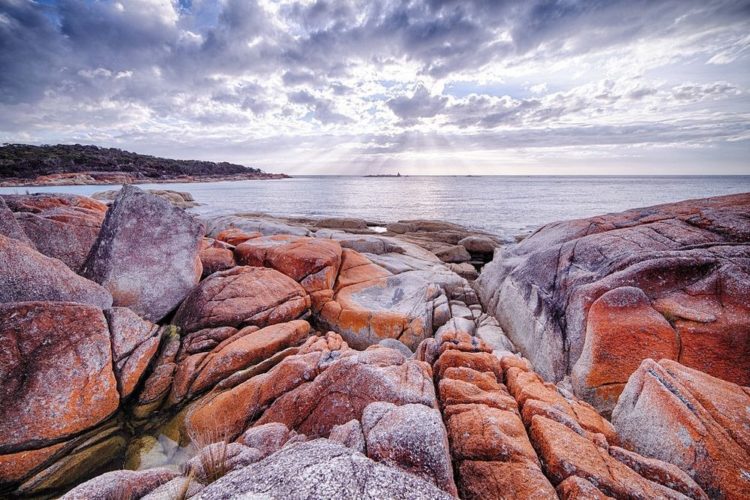The Bay of Fires is located on the northeastern coast of Tasmania in Australia. It is a big bay that stretches for about 30 km from Binalong Bay in the south to Eddystone Point in the north. In 1773, the British navigator and explorer Captain Tobias Furneaux noticed various fires along the coast, which led him to trust that the country was densely populated.
Evidence of settlement by aboriginal people can still be seen along the coast. The name Bay of Fires is associated with him when he saw the bay is characterized by white beaches, blue water, and enormous granite blocks that are colored bright orange by lichens.
The Bay of Fires is famous for its crystal-clear waters, white sandy beaches, and orange lichen-covered granite boulders, the most popular conservation reserves.
The conservation area is divided into three sections, with Anson’s Bay dividing the southern and northern ends. A scenic view of the bay can be glimpsed by driving along the coast to The Gardens.
Perhaps, he named the bay after these fiery red rocks, no one knows? Moreover, lichens are a mixture of algae and fungus that live together in a symbiotic relationship. The alga provides food by photosynthesis, though the fungus offers a protected environment for the algae.
Thus, the combined life form has properties that are very distinct from the properties of its component organisms. Moreover, lichens are classified by their fungal component and are given the same scientific name as the fungus species in the lichen, regardless of what alga lives in the fungus.
The lichens responsible for the orange hue in the rocks of the Bay of Fires belong to the family Hymeneliaceae. The beautiful color is contained in their thallus, which is the vegetative part of the body. Lichens are grouped by thallus type since the thallus is generally the most visually protuberant part of the lichen. However, in some lichens, the thallus is hard to distinguish. Which in a result many lichens have remained unclassified?
Aside from lichens, there’s a wealth of local wildlife to discover around the bay area. The coral’s birds, and the rich marine diversity that the reefs attract. A wide range of activities is able to be pursued in the Bay of Fires area.
It includes camping, beach activities, boating, bird watching, fishing, swimming, surfing, relaxing, walking, boat ramps, and rich marine biodiversity. But, be aware that Aboriginal midden “shell and bone deposits” are found in the sand dunes, hence do not disturb these protected sites.
Also, Read The Wilderness of Bisti Badlands









Source: Parks Tas / Discover Tasmania /






